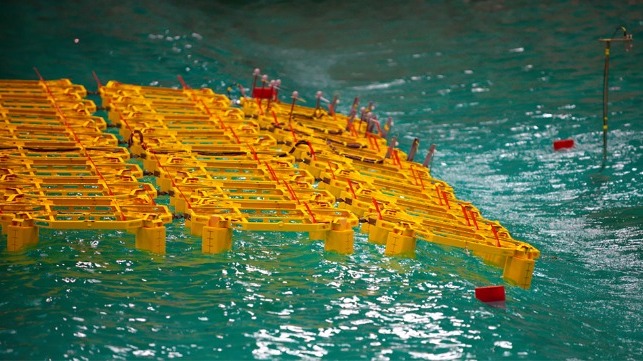Norwegian Scientists Want to Launch Floating Solar Power Plants

The first floating solar power plants will soon see the light of day offshore. There are many advantages to utilizing solar energy at sea: valuable land areas can be freed up, and it will be possible to utilize ocean areas that are of little use today.
In addition, water-based solar energy can give energy production an extra boost, both because it increases the available areas for solar power, but also because water provides a natural cooling effect for the solar panels. This effect provides increased efficiency and optimizes operation.
However, the development of water-based installations is not without challenges. The installations must withstand dynamic conditions including waves, wind and currents, and at the same time it must be competitive on price. This is where engineers and scientists come into the picture.
"Our role is to solve the market's challenges by studying and testing the installations. The goal is to develop efficient and cost-effective technical solutions for solar energy," says Nuno Fonseca, senior researcher at SINTEF Ocean.
Recently, Fonseca's team carried out a model test that shows that floating solar power plants can withstand a lot - perhaps so much that they can be launched far out to sea.
Experience through model testing
A report from Det Norske Veritas (DNV) points out that solar energy must be eight to ten times greater than it is today by 2030, if we are to achieve the goals in the Paris Agreement.
If we are to achieve the goals, we must challenge the traditional solutions. Now researchers at SINTEF have tested a model of a floating solar power plant in a 1:13 scale in the ocean basin. The project was commissioned by Moss Maritime and Equinor.
The model was equipped with sensors that collected wave information, movement and loads in the mooring and connection points. Moss Maritime used these to calibrate its numerical model, which will later be used to design and optimize the actual installations for Equinor.
"This was a special project for us. We have never before tested a design with so many modules," says SINTEF researcher Galin Tachiev, who leads the model testing. "The model consists of a total of 64 floats that are connected together. The test showed that we are well equipped to handle such complex installations. The collaboration between Moss Maritime and Equinor is innovative because it explores the possibility of installing at vulnerable locations."
"Society has hundreds of years of experience with traditional marine structures, but this area is new, and then model testing becomes especially important. There are complex systems with complex behavior. And model testing in the ocean basin allows us to produce reliable data for the construction's behavior under realistic conditions," explains Nuno Fonseca.
In SINTEF's marine laboratory, the researchers develop designs and build models of floating structures which are then tested under physical conditions. Here waves, wind and currents can be simulated in real time. The data from the model tests are used both to find areas for improvement on the floating installations, and to verify numerical models - ie data simulations of the same experiment.
This is important in order to be able to document the strength and safety of marine structures.
Takes the concept offshore
"The collaboration between Moss Maritime and Equinor is innovative because it explores the possibility of installing at vulnerable locations," said Øyvind Helland, who is research director at SINTEF Ocean. "Today's concepts are mostly designed for lakes and hydropower reservoirs, and many of them would fall short if they were exposed to waves."
SINTEF Ocean is also involved in Equinor's pilot plant for floating sun off Frøya. The goal is to expand the pilot plant to become a full-scale research and development facility. Here, researchers will be able to work closely with SINTEF ACE and the future Ocean Space Center.
"One of the biggest advantages will be to have several locations in the immediate vicinity, and that they complement each other. This is one of our strengths," says Øyvind Hellan.
The researchers want to continue the technical work with model testing of floating solar structures in exposed areas at sea. In addition, the team will collaborate with colleagues who can look at societal aspects, and what impact the installations will have on the environment.
"Norwegian industry has a strong and unique position as a leader in renewable energy, offshore technology and marine operations," says Hellan.
This article appears courtesy of SINTEF and may be found in its original form here.
The opinions expressed herein are the author's and not necessarily those of The Maritime Executive.
